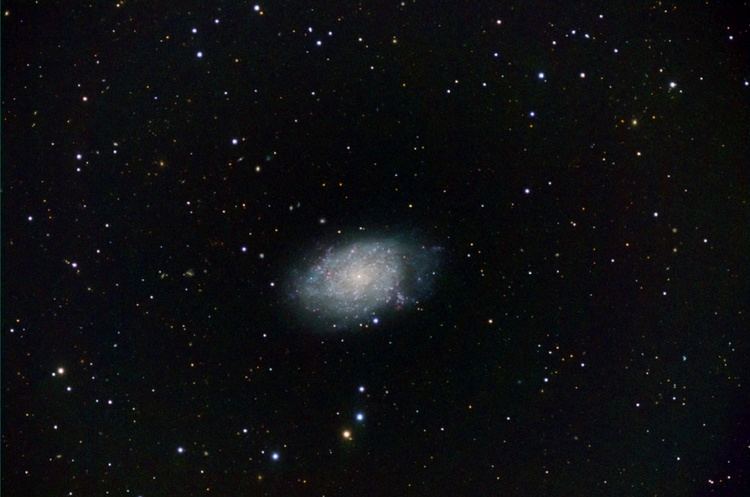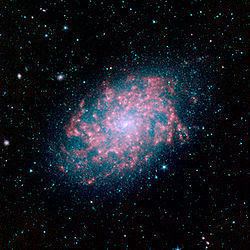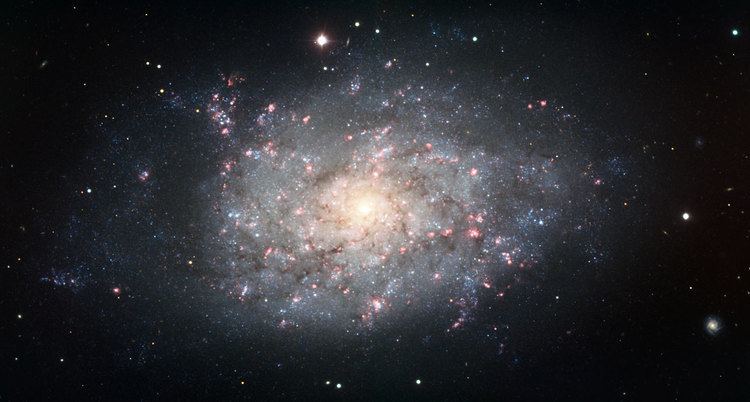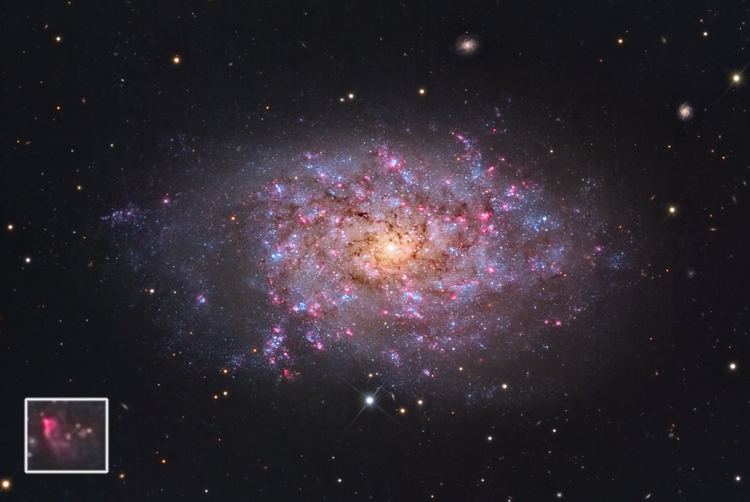Right ascension 23 57 49.8 Redshift 227 ± 2 km/s Apparent size (V) 9′.3 × 6′.3 Constellation Sculptor | Declination −32° 35′ 28″ Type SA(s)d Magnitude 10 Apparent magnitude (V) 10 | |
 | ||
Distance 12.7 ± 1.3 Mly (3.9 ± 0.4 Mpc) Similar NGC 300, NGC 55, NGC 247, Sculptor Galaxy, NGC 2403 | ||
Ngc 7793 in 60 seconds high definition
NGC 7793 is a spiral galaxy about 12.7 million light-years away in the constellation Sculptor. It was discovered in 1826 by James Dunlop.
Contents
- Ngc 7793 in 60 seconds high definition
- Ngc 7793 in 60 seconds standard definition
- Galaxy group information
- Supernova 2008bk
- Black hole P13 in outer spiral
- References

Ngc 7793 in 60 seconds standard definition
Galaxy group information

NGC 7793 is one of the brightest galaxies within the Sculptor Group, a group of galaxies in the constellation of the same name. The group itself is an elongated, loosely bound group of galaxies with the Sculptor Galaxy (NGC 253) and its companion galaxies forming a tightly-bound core of galaxies near the center.
Supernova 2008bk

On March 25, 2008, SN 2008bk was discovered in NGC 7793. At apparent magnitude 12.5, it became the 2nd brightest supernova of 2008. The proginator of this supernova was a Red Supergiant, observed only 547 days prior to the explosion.
Black hole P13 in outer spiral

Jets from a black hole named P13 power a large nebula named S26 in the outer spiral of this galaxy. Recently, the mass of P13 was determined to be less than 15 solar masses, and its companion star is estimated to be around 20 solar masses. The two orbit each other in 64 days. Based on this estimate, P13 is stripping material away from a nearby star about ten times faster than was previously believed to be physically possible. If correct, this observation would show flaws in theories that a black hole's mass and rate of consumption are a fixed relationship.
